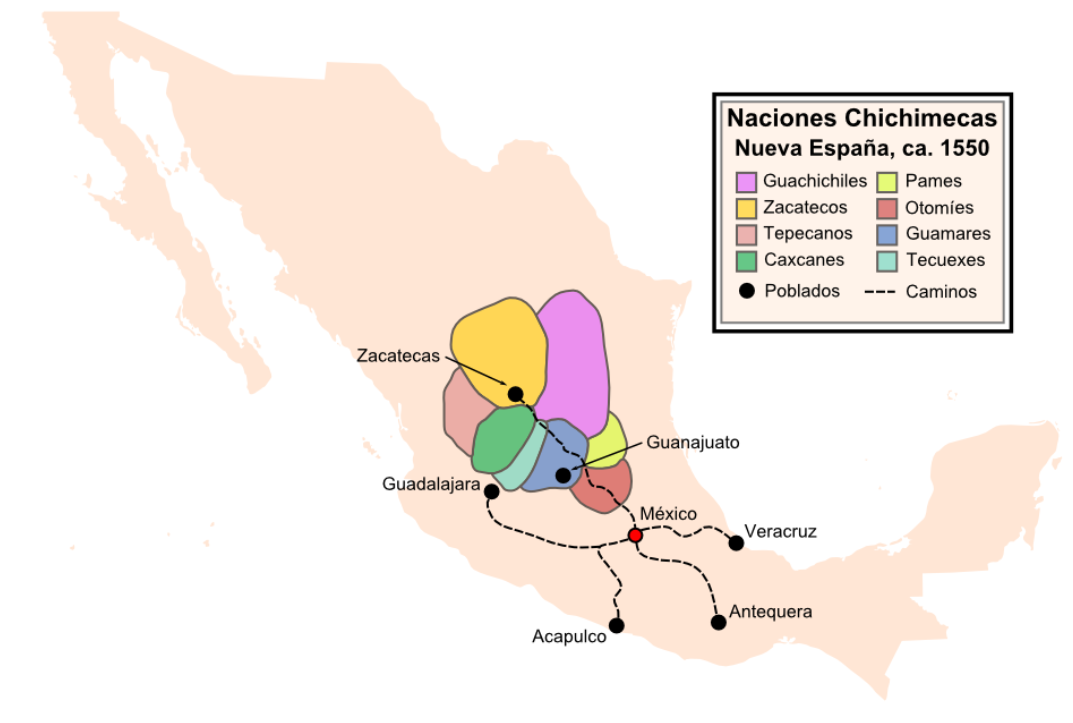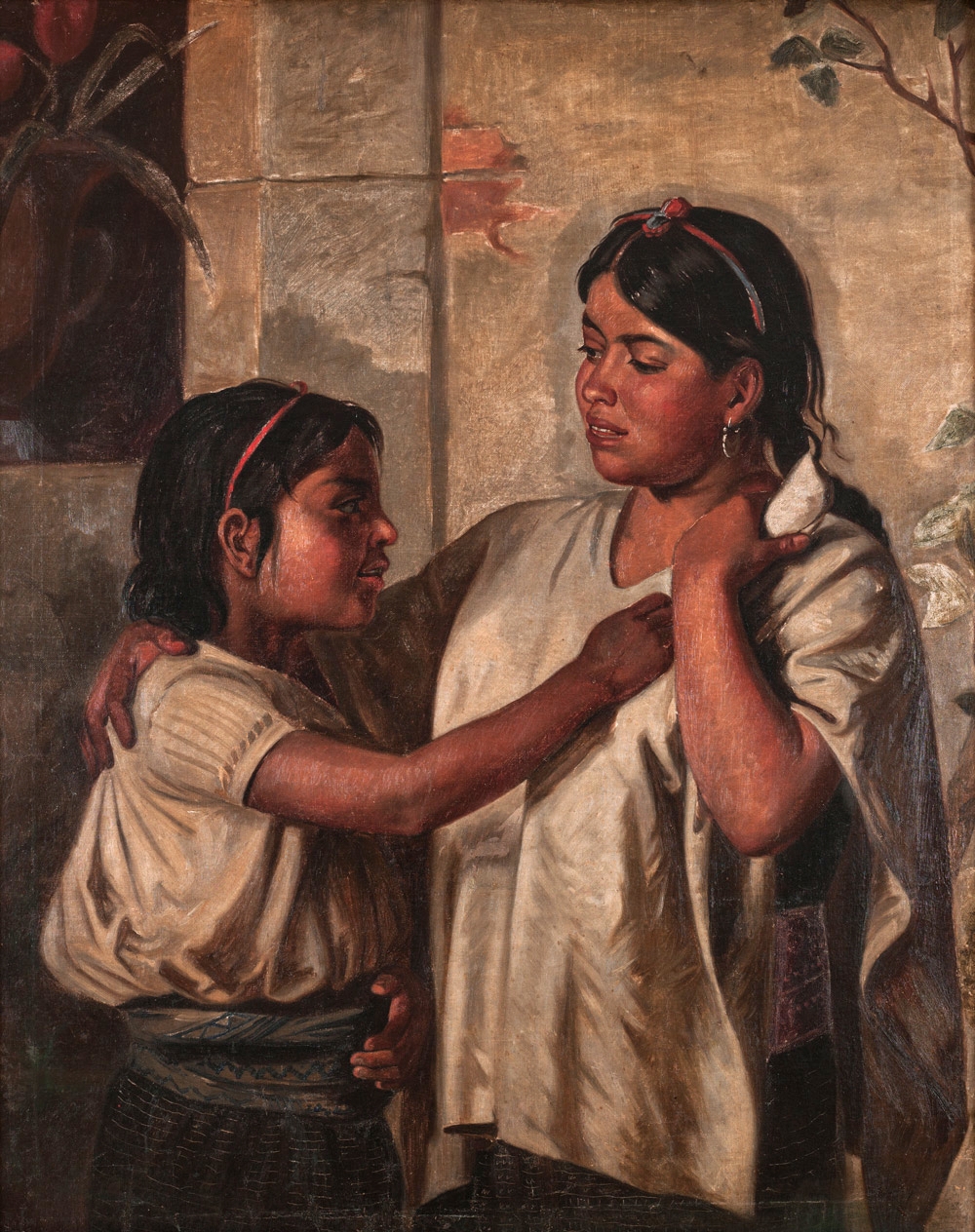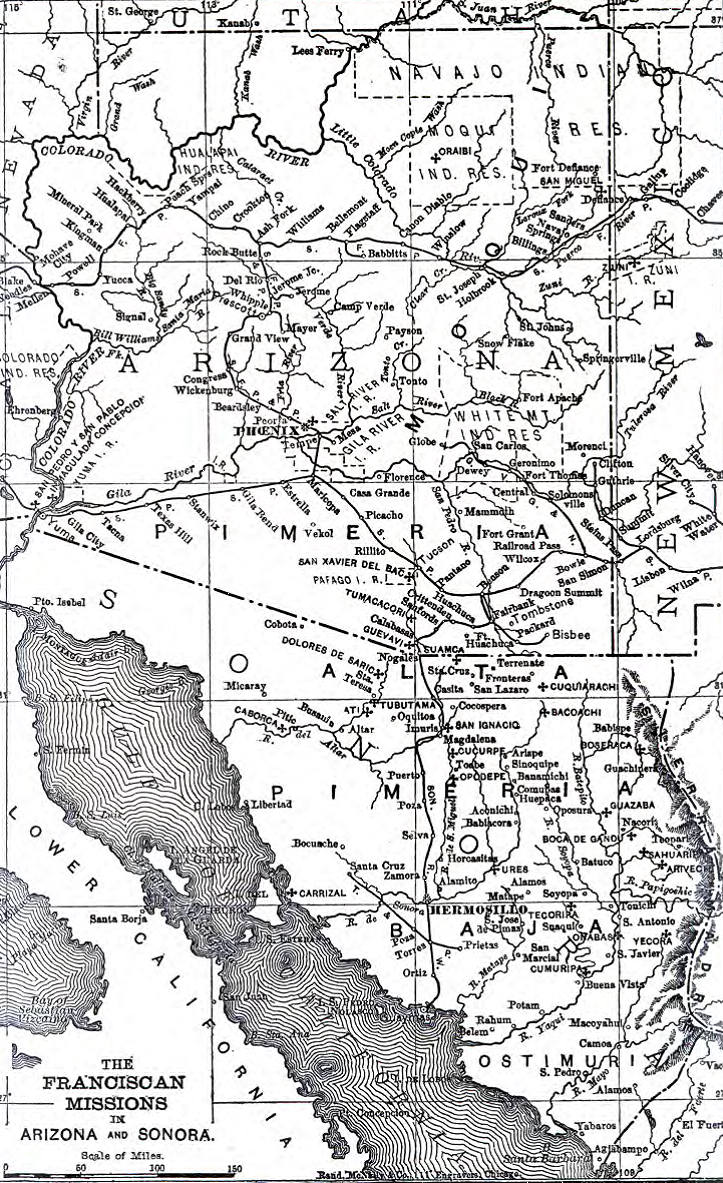|
Chichimeca Jonaz People
The Chichimeca Jonaz are an indigenous people of Mexico, living in the states of Guanajuato and San Luis Potosí. In Guanajuato, the Chichimeca Jonaz people live in a community in San Luis de la Paz municipality. The settlement is 2,070 m above sea level. They call this place ''Rancho Úza'' or ''Misión Chichimeca''. They are descendants of the Pame people, who fought in the Chichimeca War (1550-1590) in the Chichimeca Confederation. In the 2000 General Census by INEGI 2,641 people named themselves as speakers of the Chichimeca Jonaz language. Of these 1,433 speakers lived in Guanajuato, and the other 115 in San Luis Potosí. Their language belongs to the Pamean sub-branch of the Oto-Pamean branch of the Oto-Manguean language family, the closest relative of the Chichimeca Jonaz language is the Pame language. Spanish colonization of the Americas During the ensuing Spanish colonization of the Americas, the Chichimecas Jonaz descendants, whom are the Pame nation, joined th ... [...More Info...] [...Related Items...] OR: [Wikipedia] [Google] [Baidu] |
Chichimeca
Chichimeca () is the name that the Nahua peoples of Mexico generically applied to nomadic and semi-nomadic peoples who were established in present-day Bajio region of Mexico. Chichimeca carried the meaning as the Roman term "barbarian" that described Germanic tribes. The name, with its pejorative sense, was adopted by the Spanish Empire. For the Spanish, in the words of scholar Charlotte M. Gradie, "the Chichimecas were a wild, nomadic people who lived north of the Valley of Mexico. They had no fixed dwelling places, lived by hunting, wore little clothes and fiercely resisted foreign intrusion into their territory, which happened to contain silver mines the Spanish wished to exploit." In spite of not having temples or idols, they practiced animal sacrifice, and they were feared for their expertise and brutality in war. The Spanish invasion resulted in a "drastic population decline of all the peoples known collectively as Chichimecas, and to the eventual disappearance as peopl ... [...More Info...] [...Related Items...] OR: [Wikipedia] [Google] [Baidu] |
Chichimeca War
The Chichimeca War (1550–90) was a military conflict between the Spanish Empire and the Chichimeca Confederation established in the territories today known as the Central Mexican Plateau, called by the Conquistadores La Gran Chichimeca. The epicenter of the hostilities was the region now called the Bajío. The Chichimeca War is recorded as the longest and most expensive military campaign confronting the Spanish Empire and indigenous people in Mesoamerica. The forty-year conflict was settled through several peace treaties driven by the Spaniards which led to the pacification and, ultimately, the streamlined integration of the native populations into the New Spain society. The Chichimeca War (1550-1590) began eight years after the two-year Mixtón War. It can be considered a continuation of the rebellion as the fighting did not come to a halt in the intervening years. Unlike in the Mixtón rebellion, the Caxcanes were now allied with the Spanish. The war was fought in what ... [...More Info...] [...Related Items...] OR: [Wikipedia] [Google] [Baidu] |
Indigenous Peoples In Mexico
Indigenous peoples of Mexico ( es, gente indígena de México, pueblos indígenas de México), Native Mexicans ( es, nativos mexicanos) or Mexican Native Americans ( es, pueblos originarios de México, lit=Original peoples of Mexico), are those who are part of communities that trace their roots back to populations and communities that existed in what is now Mexico before the arrival of the Spanish. The number of indigenous Mexicans is defined through the second article of the Mexican Constitution. The Mexican census does not classify individuals by race, using the cultural-ethnicity of indigenous communities that preserve their indigenous languages, traditions, beliefs, and cultures. According to the National Indigenous Institute (INI) and the National Institute of Indigenous Peoples (CDI), in 2012 the indigenous population was approximately 15 million people, divided into 68 ethnic groups. The 2020 Censo General de Población y Vivienda reported 11.8 million people living in ... [...More Info...] [...Related Items...] OR: [Wikipedia] [Google] [Baidu] |
Eusebio Kino
Eusebio Francisco Kino ( it, Eusebio Francesco Chini, es, Eusebio Francisco Kino; 10 August 1645 – 15 March 1711), often referred to as Father Kino, was a Tyrolean Jesuit, missionary, geographer, explorer, cartographer and astronomer born in the Territory of the Bishopric of Trent, then part of the Holy Roman Empire. For the last 24 years of his life he worked in the region then known as the Pimería Alta, modern-day Sonora in Mexico and southern Arizona in the United States. He explored the region and worked with the indigenous Native American population, including primarily the Tohono O'Odham, Sobaipuri and other Upper Piman groups. He proved that the Baja California Territory was not an island but a peninsula by leading an overland expedition there. By the time of his death he had established 24 missions and visitas (country chapels or visiting stations). Early life Kino was born Eusebio Chini (the spelling Kino was the version for use in Spanish-speaking domains) in ... [...More Info...] [...Related Items...] OR: [Wikipedia] [Google] [Baidu] |
Spanish Missions In The Sonoran Desert
The Spanish missions in the Sonoran Desert ( es, Misiones jesuíticas en el desierto de Sonora) are a series of Jesuit Catholic religious outposts established by the Spanish Catholic Jesuits and other orders for religious conversions of the Pima and Tohono O'odham indigenous peoples residing in the Sonoran Desert. An added goal was giving Spain a colonial presence in their frontier territory of the Sonora y Sinaloa Province in the Viceroyalty of New Spain, and relocating by Indian Reductions (''Reducciones de Indios'') settlements and encomiendas for agricultural, ranching, and mining labor. Geography and history The missions are in an area of the Sonoran Desert, then called " Pimería Alta de Sonora y Sinaloa" (Upper Pima of Sonora and Sinaloa), now divided between the Mexican state of Sonora and the U.S. state of Arizona. Jesuits in missions in Northwestern Mexico wrote reports that throw light on the indigenous peoples they evangelized. A 1601 report, ''Relación de la ... [...More Info...] [...Related Items...] OR: [Wikipedia] [Google] [Baidu] |
Pame Language
The Pame languages are a group of languages in Mexico that is spoken by around 12,000 Pame people in the state of San Luis Potosí. It belongs to the Oto-Pamean branch of the Oto-Manguean language family. Distribution and languages Ethnologue notes two living varieties of Pame both spoken in the state of San Luis Potosí: Central Pame, in the town of Santa María Acapulco, and Northern Pame, in communities from the north of Río Verde to the border with Tamaulipas. The third variety, Southern Pame, was last described in the mid 20th century, is assumed to be extinct, and is very sparsely documented. It was spoken in Jiliapan, Hidalgo, and Pacula, Querétaro. *Northern Pame (Ñãʔũ) (~6,000) *Central Pame (Šiʔúi) (~6,000) *Southern Pame (Šiyúi) (†) Classification The Pame languages are part of the Oto-Pamean branch of the Oto-Manguean language family. They are most closely related to the Chichimeca Jonaz language, spoken in Guanajuato, and together, they form t ... [...More Info...] [...Related Items...] OR: [Wikipedia] [Google] [Baidu] |
Oto-Manguean
The Oto-Manguean or Otomanguean languages are a large family comprising several subfamilies of indigenous languages of the Americas. All of the Oto-Manguean languages that are now spoken are indigenous to Mexico, but the Manguean branch of the family, which is now extinct, was spoken as far south as Nicaragua and Costa Rica. Oto-Manguean is widely viewed as a proven language family. However, this status has been recently challenged. The highest number of speakers of Oto-Manguean languages today are found in the state of Oaxaca where the two largest branches, the Zapotecan and Mixtecan languages, are spoken by almost 1.5 million people combined. In central Mexico, particularly in the states of Mexico, Hidalgo and Querétaro, the languages of the Oto-Pamean branch are spoken: the Otomi and the closely related Mazahua have over 500,000 speakers combined. Some Oto-Manguean languages are moribund or highly endangered; for example, Ixcatec and Matlatzinca each has fewer than 25 ... [...More Info...] [...Related Items...] OR: [Wikipedia] [Google] [Baidu] |
Members Of The Chichimeca Jonaz Tribe At San Luis De La Paza%2C Guanajuato
Member may refer to: * Military jury, referred to as "Members" in military jargon * Element (mathematics), an object that belongs to a mathematical set * In object-oriented programming, a member of a class ** Field (computer science), entries in a database ** Member variable, a variable that is associated with a specific object * Limb (anatomy), an appendage of the human or animal body ** Euphemism for penis * Structural component of a truss, connected by nodes * User (computing), a person making use of a computing service, especially on the Internet * Member (geology), a component of a geological formation * Member of parliament * The Members, a British punk rock band * Meronymy, a semantic relationship in linguistics * Church membership, belonging to a local Christian congregation, a Christian denomination and the universal Church * Member, a participant in a club or learned society A learned society (; also learned academy, scholarly society, or academic association) is a ... [...More Info...] [...Related Items...] OR: [Wikipedia] [Google] [Baidu] |
Indigenous People Of Mexico
Indigenous peoples of Mexico ( es, gente indígena de México, pueblos indígenas de México), Native Mexicans ( es, nativos mexicanos) or Mexican Native Americans ( es, pueblos originarios de México, lit=Original peoples of Mexico), are those who are part of communities that trace their roots back to populations and communities that existed in what is now Mexico before the arrival of the Spanish. The number of indigenous Mexicans is defined through the second article of the Constitution of Mexico, Mexican Constitution. The Censo General de Población y Vivienda, Mexican census does not classify individuals by race, using the Culture, cultural-Ethnic group, ethnicity of indigenous communities that preserve their Indigenous language, indigenous languages, traditions, beliefs, and cultures. According to the National Indigenous Institute (INI) and the National Institute of Indigenous Peoples (CDI), in 2012 the indigenous population was approximately 15 million people, divided into ... [...More Info...] [...Related Items...] OR: [Wikipedia] [Google] [Baidu] |
Guanajuato
Guanajuato (), officially the Free and Sovereign State of Guanajuato ( es, Estado Libre y Soberano de Guanajuato), is one of the 32 states that make up the Federal Entities of Mexico. It is divided into 46 municipalities and its capital city is Guanajuato. Guanajuato is in central Mexico. It is bordered by the states of Jalisco to the west, Zacatecas to the northwest, San Luis Potosí to the north, Querétaro to the east, and Michoacán to the south. It covers an area of . The state is home to several historically important cities, especially those along the "Bicentennial Route", which retraces the path of Miguel Hidalgo y Costilla's insurgent army at the beginning of the Mexican War of Independence. This route begins at Dolores Hidalgo, and passes through the Sanctuary of Atotonilco, San Miguel de Allende, Celaya, and the capital of Guanajuato. Other important cities in the state include León, the state's biggest city, Salamanca, and Irapuato. The first town establi ... [...More Info...] [...Related Items...] OR: [Wikipedia] [Google] [Baidu] |
Ximpece
The Ximpece are an Indigenous people of Mexico who were a semi-nomadic ethnic group of Chichimecas who lived among the Pame and the Jonaz. The National Commission for the Development of Indigenous Peoples reported that "about 60,000 Amerindians live in the state of Querétaro, belonging to the Otomi, Chichimeca, Pame, Jonace and Ximpece peoples." It is unclear whether the Ximpece exist today as an intact cultural group due to minimal historical and contemporary sources. History Any sources which "provide descriptions about the way of life of the natives of the Sierra Gorda for the sixteenth and seventeenth centuries are very scarce." One of the most important sources on the Ximpece is by "a military man of the eighteenth century" Gerónimo de Labra. Designated as the "captain protector of the Indians of the Sierra Gorda," Labra's "Manifest of the precedent in the conquest, pacification and reduction of the chichimecos jonaces Indians of the Sierra Gorda" described the Ximpece, ... [...More Info...] [...Related Items...] OR: [Wikipedia] [Google] [Baidu] |






